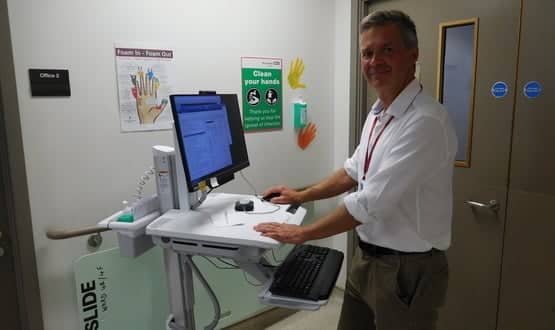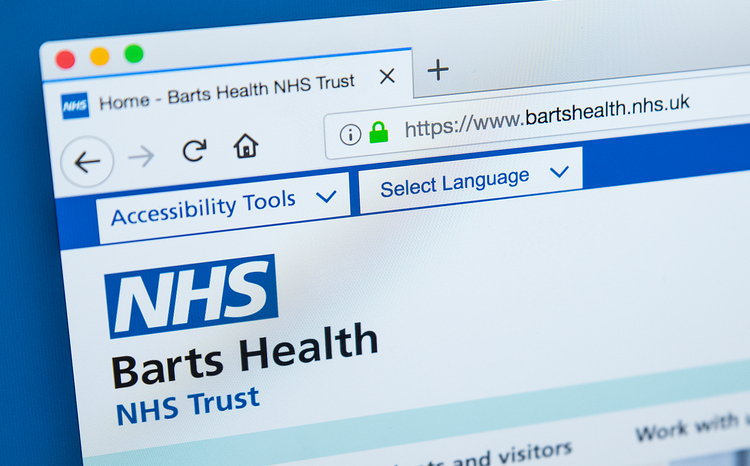Barts Health NHS Trust staff WOWed by new workstations
- 3 July 2018

Staff at Barts Health NHS Trust hospitals are being wowed by their new Workstations on Wheels (WOWs) which have been introduced thanks to funding from the Barts Charity.
The charity, which supports the trust as well as the London School of Medicine and Dentistry, provided the £500,000 funding for the 162 wifi-connected computers which are on specially-designed movable desks.
The computers are currently being used in inpatient wards at The Royal London hospital and St Bartholomew’s hospital.
Staff can use the WOWs after signing in with a secure card and are able to view real-time data in the trust’s electronic health record system.
David van Heel, deputy CCIO at the trust, submitted an application to the charity for the WOWs, arguing that current systems in place were not safe.
He told Digital Health News the new technology is “very useful” on consultant and junior doctor ward rounds as it allows notes, blood and x-rays can be review directly from a patient’s bedside.
Van Heel, also said the mood and morale of junior doctors “greatly increased” which came as a surprise benefit to the trust.
Other staff have also welcomed the WOWs, with senior clinical fellow, Burak Salgin, saying the new workstations have “significantly improved” efficiency and safety on one of the Neonatal Intensive Care Units.
It is hoped the new technology will mean cost reductions, both by removing printing costs and avoiding duplicated tests, as there is less margin for error. Another benefit, as the NHS becomes digitised, is that the WOWs help students and staff on the wards stay up to date with e-health practices.
Mo Thaha, senior lecturer and consultant in colorectal surgery added: “The new machines have already made an enormous contribution and impact.
“There is a new momentum across all of the surgical floor. Now you can feel and see the entire pathway connected by electronic health records.”
Barts Charity also provided £5.5million funding for two Da Vinci Xi Surgical System machines in July 2017.
The surgery technology involves a surgeon using the robot’s ‘arms’, which hold surgical instruments.
This means patients can be treated with minimally invasive surgery with several small incisions made instead of one big cut.






1 Comments
How can it be a good thing that a charity has to pay for what should be part of a Trust’s digitization roadmap?
Comments are closed.